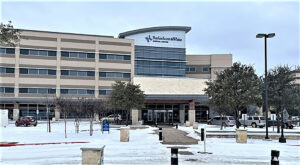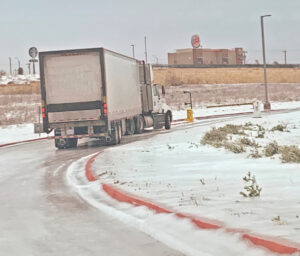The largest not-for-profit health care system in Texas put product on the road each day
By Daniel Beaird
Two winter storms dealt more blows to the U.S. supply chain in mid-February. Winter Storm Shirley – a damaging ice storm on Feb. 10-11 – and Winter Storm Uri – the North American winter storm that blew through the U.S., Canada and northern parts of Mexico from Feb. 13-17 – provided a one-two punch.

The second storm resulted in more than 170 million Americans being placed under various winter weather alerts by the National Weather Service. It caused blackouts for more than 9.9 million people in the U.S. and Mexico, most notably causing the Texas power crisis, and was the largest U.S. blackout in 18 years.
More than 4.5 million homes and businesses in Texas were left without power and it’s predicted that it will be the costliest winter storm in Texas history, even possibly outpacing Hurricane Harvey in 2017 for costliest overall. Treacherous roadways in the state left hospitals on alert for weather-related trips to emergency rooms, but also challenged their own supply chain logistics.
Challenging moments
Baylor Scott & White Health, the largest not-for-profit health care system in Texas with 52 hospitals, and its supply chain safely answered the call.
“There were hectic days and challenging moments, but we’re proud that everyone remained safe,” said Julio Carrillo, vice president of logistics for Baylor Scott & White.
Baylor Scott & White’s CDL drivers exited the demanding week without any major incidents.
“Their job is to be on the road,” commented Carrillo. “It was a challenging scenario. There was rain and freezing conditions (Feb. 10-11) prior to the big storm (Feb. 13-17) that was not easy to drive through. That led us to talk about contingency plans ahead of [Winter Storm Uri].”
Baylor Scott & White’s regular distribution work schedule runs from Sunday to Friday, but its distribution center in Temple, Texas, started running on Saturday, Feb. 13, in an ad hoc change.
“The past 12 months of the pandemic prepared us, in a way, for this winter event,” added Carrillo. “It’s been all about overseeing the business continuity plan for the supply chain and Mother Nature said, ‘I have some plans for you.’
“We were one of the very few distribution channels that remained active throughout the week. We came to work every single day and put product on the road each day.”
As Winter Storm Uri proved unusual in its reach, extent and brunt on freight transportation, the worst disruption was in Texas. Truck traffic at the U.S.-Mexico border practically stood still.

“Trying to find hotels for our CDL drivers was nearly impossible, but that’s when human acts of kindness helped everyone get through,” said Carrillo.
Energy providers focused on securing supply to residential customers and asked manufacturers to reduce or suspend output during the storm. Officials with the Electric Reliability Council of Texas (ERCOT), which operates Texas’ electrical grid – the Texas Interconnection, said that grid operators implemented blackouts to avoid a catastrophic failure that could have left Texans in the dark for months.
“Our major punch was Tuesday (Feb. 16) when the systems went down because of the power outages,” said Carrillo. “The two data centers in north and central Texas couldn’t access each other. You only had access to the applications in your area.”
But Baylor Scott & White built on its engineering redundancies and managed manually under a continuous supply perspective.
“If systems go down, how do you keep accuracy, the resolution you need, how do you order, how do you keep tracking. We triggered all of those and compensated to continue running,” explained Carrillo. “We never had any back orders. We never stopped shipping. And we never ran out.”
Baylor Scott & White’s emergency generators worked flawlessly during the power outage.
After power was restored, ice became the distribution center’s central problem on Thursday, Feb. 18. But vendors, partners and Baylor Scott & White’s maintenance crew pitched in to help clear the ice from the distribution center’s access points.
“An 18-wheeler is like Bambi on top of that ice, so we came together and removed the ice,” emphasized Carrillo. By Saturday, Feb. 20, Baylor Scott & White was 100% up to date and on schedule. According to Carrillo, it took some other distribution centers in the area two more days to catch up.
Baylor Scott & White’s distribution team has a list – from small to large – of 29 things they learned from during Winter Storm Uri. Everything from attendance and payrolls to how the compactor for cardboard can be removed easily if the vendor isn’t present.
“Zero backlogs allowed us to concentrate on lessons learned,” affirmed Carrillo. “We’ve learned from the pandemic to stick to the process. Don’t take shortcuts. Accuracy is king.”
“We were processing as fast as we could during the pandemic in 2020 and there is always an urgency to get product on the road, but it doesn’t justify doing things wrong,” said Carrillo. “[February’s] event was fast and furious. But we applied lessons learned from last year.”
